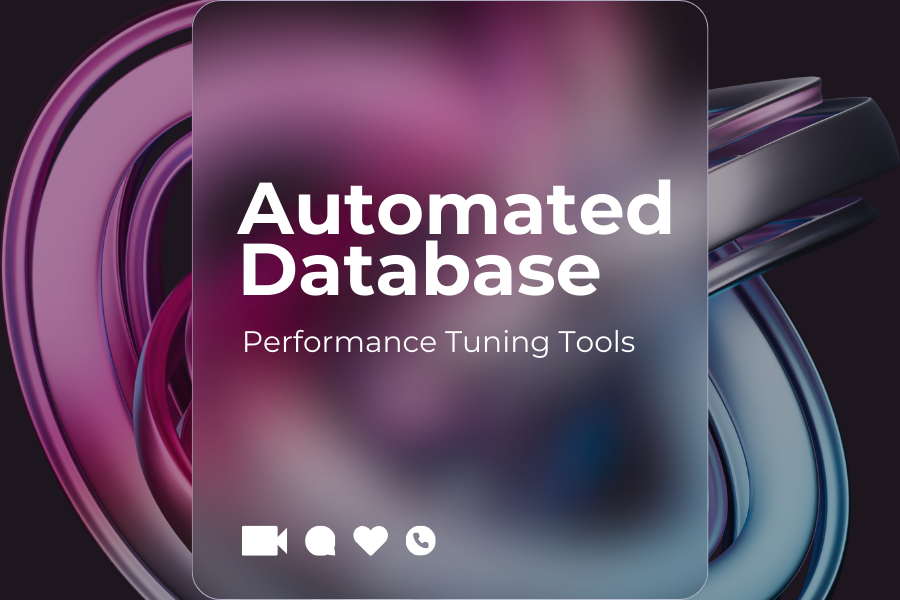Automated Database Performance Tuning: Tools and Techniques
In the ever-evolving landscape of database control, performance tuning is essential to ensuring ultimate functionality and responsiveness. Manual tuning will become a challenging and time-ingesting task as databases develop in size and complexity. Automated database performance tuning has emerged to streamline this system, leveraging tools and techniques to enhance performance. This article explores the blessings, equipment, and automated database overall performance tuning techniques.
The Significance of Database Performance Tuning
Database performance tuning optimizes a database machine to function successfully, handing over faster query reaction instances and stepping forward normal gadget responsiveness. In a international in which information volumes are continuously growing, overall performance tuning is crucial for maintaining finest software overall performance, assembly consumer expectancies, and supporting business operations.
One of the most critical parts of database management is performance tuning, which seeks to improve and optimize a database system. This process includes a number of approaches and tools to improve database performance.Here are some key points highlighting the significance of database performance tuning:
- Improved Query Performance: The reduction in the query execution time is one of major objectives that are achieved during database tuning. This is particularly crucial in settings where prompt data retrieval is essential, which includes financial trading systems or online transaction processing.
- Increased System Efficiency: Tuning aids in efficient use of system resources (such as CPU, memory and disk I/O) which translates to fast response time. This enables maximum utilization of resources, hence minimizing wastage and unnecessary costs resulting from underutilized databases.
- Enhanced Scalability: With the increasing number of users and volumes of data, a properly tuned database can respond under increased loads without serious performance degradations. This helps businesses to upscale their operations with minimal costs on hardware.
- Cost Reduction: Through database optimization, companies can somehow save costs that might have been invested in hardware upgrade or purchasing more resources. Using the resources that are already available cut down on investments in new infrastructure immediately.
- Improved User Experience: More accurate and faster database responses improve user experience. This is crucial for customer-specific applications as performance directly affects the level of satisfaction and retention of customers.
- Proactive Problem Identification: Routine performance tuning allows an individual to detect problems early, before they turn into critical. The preventive approach aims at preventing downtime and the expenses that come with emergency fixes, as well as data recovery.
- Support for Complex Operations: In databases containing difficult operations and queries, it is necessary to tune the performance of these processes so that they take an acceptable amount of time.
- Compliance and SLA Adherence: Service level agreements (SLAs) of many businesses include performance metrics. Good database tuning avoids penalties and enables maintaining a good reputation due to the meeting of SLAs.
- Data Integrity and Consistency: Performance tuning may also improve data integrity and consistency maintenance in the systems where multiple transactions occur concurrently.
- Competitive Advantage: In a time where data represents one of the most important assets in decision making, outperforming databases allows for faster and more accurate analyses.
Benefits of Automated Database Performance Tuning
It is by improving the efficiency, reliability and general performance of database systems through automated tuning that automated database tuning offers several major benefits.Here are some of the key advantages:
Time Efficiency: Automated tuning equipment can swiftly analyze huge quantities of overall performance-related facts, perceive bottlenecks, and endorse or put in force optimizations. This expedites the tuning technique, allowing database directors to consciousness on strategic tasks instead of guide performance changes.
Consistency: Automation ensures a consistent approach to performance tuning throughout exclusive environments. By making use of standardized optimizations, corporations can keep a uniform degree of performance throughout their database systems.
Proactive Issue Detection: Automated tools can constantly monitor database overall performance and come across issues in real time. This proactive technique lets in directors to cope with capability troubles before they effect customers, minimizing downtime and ensuring a dependable consumer experience.
Data-Driven Decision-Making: Leveraging overall performance metrics and analytics, automatic tuning equipment make records-pushed hints for optimizations. This permits directors to make knowledgeable decisions primarily based on a comprehensive know-how of the database’s overall performance traits.

Automated Database Performance Tuning Tools
Automated database performance tuning has several tools available that feature different facilities. These tools can assist DB admins with managing and improving the performance of their databases.Here’s a list of some popular automated database performance tuning tools:
Microsoft SQL Server Query Store: Query Store provides insights into question performance, execution plans, and aid utilization. It enables automatic plan correction, assisting to hold stable and efficient query execution.
Oracle Database Automatic Tuning: Oracle Database consists of computerized tuning capabilities including Automatic SQL Tuning, which robotically identifies poorly appearing SQL statements and suggests optimizations.
Amazon Aurora Performance Insights: Performance Insights for Amazon Aurora gives visual representations of database overall performance. It gives computerized question optimization suggestions, supporting users quickly pick out and deal with performance issues.MySQL Performance Schema: MySQL Performance Schema is an effective device for tracking and studying database overall performance. It may be used to identify overall performance bottlenecks and optimize query execution.

Techniques in Automated Database Performance Tuning
Automated database performance tuning comprises a wide range of techniques, which are employed to optimize the way that databases work and enhance efficiency. These techniques can be broadly categorized into several key areas:
Index Optimization: Automated equipment can examine question patterns and advocate or put into effect index optimizations to enhance statistics retrieval performance.
Query Rewriting: Some gear can mechanically rewrite queries to improve overall performance by using converting the query structure or optimizing the execution plan.
Memory Management: Automated tuning tools can alter reminiscence allocation settings primarily based on workload styles, optimizing using available sources.
Statistical Analysis: Utilizing statistical evaluation, automated gear can identify outliers, developments, and styles in overall performance records, leading to centered optimizations.
Conclusion
Automated database overall performance tuning is a transformative method to retaining best database capability within the face of growing information complexities. Organizations can use tools and techniques to streamline the tuning technique, keep time, and proactively address performance troubles. Recognizing the synergy between automatic tuning tools and sturdy database help ensures a harmonious and efficient database management ecosystem.








